-
Seed Shop
-
Feminized
Cannabis seeds -
Autoflowering
Cannabis Seeds -
Regular
Cannabis Seeds -
F1 Hybrid
Cannabis Seeds -
CBD
Cannabis Seeds -
Zamnesia
Cannabis Seeds
-
Top 10’s
- Top 10 Feminized Seeds
- Top 10 Autoflowering Seeds
- Top 10 Regular Seeds
- Top 10 USA Cannabis Strains
- Top 10 Zamnesia Seeds
-
Favourites
- Beginner Strains
- Below 1% THC
- Classic Cannabis Strains
- Cup Winners
- F1 Hybrids
- Fast-Flowering Strains
- High CBD Strains
- High THC Strains
- Mix Packs
- Zamnesia Exclusive Collabs
-
-
Headshop
-
Vaporshop
- Spare Parts & Accessories
- AirVape X
- AirVape XS GO (2021)
- Arizer Air MAX
- Arizer Extreme Q
- Arizer Solo 2
- Arizer V-Tower
- Arizer XQ2
- Boundless CFC 2.0 Vaporizer
- Boundless CFX
- Boundless TERA (V3)
- CRAFTY+
- DaVinci IQ2
- DaVinci IQC
- DaVinci MIQRO
- Dr. Dabber Boost EVO
- Dr. Dabber Stella
- DynaVap Omni 2021
- DynaVap VapCap "M" PLUS 2023
- DynaVap VapCap 'M' 2021
- DynaVap VonG (i) Titanium
- Dynavap The "B" Series
- Eagle Bill
- Firefly 2+
- Flowermate Aura
-
Healthshop
-
Smartshop
-
Shroomshop
-
Growshop
-
Seed Shop
All CategoriesSeed Shop
-
Vaporshop
All CategoriesVaporshop
- Top 10 Vaporizers
- Spare Parts & Accessories
- AirVape X
- AirVape XS GO (2021)
- Arizer Air MAX
- Arizer Extreme Q
- Arizer Solo 2
- Arizer V-Tower
- Arizer XQ2
- Boundless CFC 2.0 Vaporizer
- Boundless CFX
- Boundless TERA (V3)
- CRAFTY+
- DaVinci IQ2
- DaVinci IQC
- DaVinci MIQRO
- Dr. Dabber Boost EVO
- Dr. Dabber Stella
- DynaVap Omni 2021
- DynaVap VapCap "M" PLUS 2023
- DynaVap VapCap 'M' 2021
- DynaVap VonG (i) Titanium
- Dynavap The "B" Series
- Eagle Bill
- Firefly 2+
- Flowermate Aura
- Flowermate Cap Pro
- Flowermate Slick
- Flowermate V5.0S Pro
- G Pen Connect
- G Pen Elite II
- G Pen Micro+
- G Pen Pro
- G Pen Roam
- Hydrology9 Vaporizer
- Hyer Big-E Rig
- MIGHTY
- MIGHTY+
- PAX Mini
- PAX Plus
- PLENTY
- Pax 3 Vaporizer
- Puffco Peak PRO Smart Rig
- Puffco Peak Smart Rig
- Puffco Plus
- Storm Vaporizer
- The Proxy (Puffco)
- VOLCANO CLASSIC
- VOLCANO HYBRID
- Vape-Lifter
-
Smartshop
All CategoriesSmartshop
- Top 10 Smartshop
- Zamnesia Gift Cards
- After Party
- Aphrodisiacs
- Aromatherapy
- Blue Lotus
- CBD Vape Juice
- Capsule Machines
- Crystals, Gemstones & Minerals
- Dream Herbs
- Drug Tests
- Extracts
- Happy Caps
- Herbal Tea
- Herbs & Seeds
- Incense
- Kanna
- Kratom
- LSA Seeds
- Mescaline Cacti
- Microdosing
- Nootropics
- Relaxing
- Salvia divinorum
- Smart Seeds
- Stimulants
- Supplements
- Tinctures
- Vape Herbs
-
TRIBE
All CategoriesTRIBE
- My Membership
- Spend Gift Points
- Exclusive products
- Earn Extra Gift Points
-
TRIBE
- Early Access
- Refer a Friend
- Information
-
TRIBE
-
Language
 United States
United States
Monday, 21 April and Friday, 25 April 2025*
Catnip: Everything you need to know
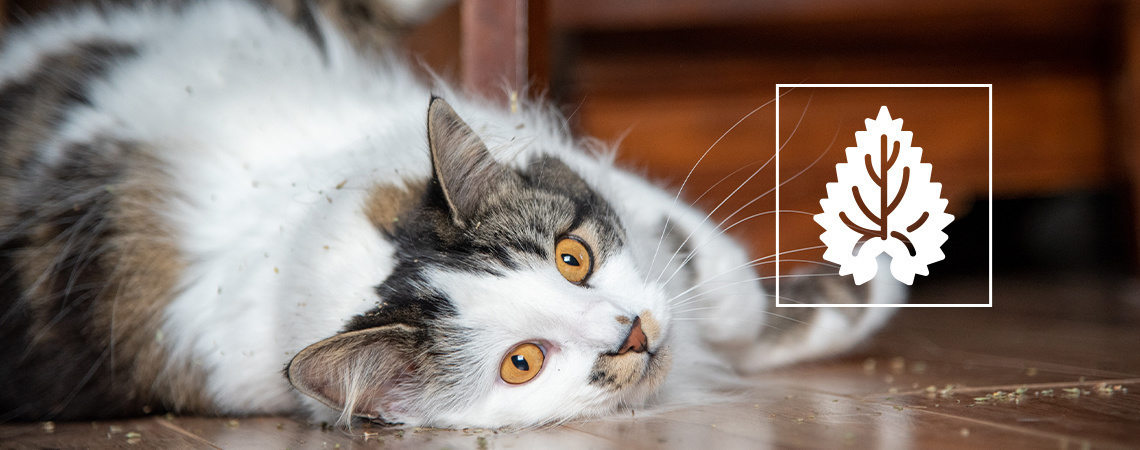
What is catnip, and why do cats go crazy for it? Explore everything about this beloved plant—from effects and benefits to tips on giving it safely to your feline friend.
Catnip—the ultimate party starter for your feline friend. All it takes is one whiff of this herb, and your placid cat can turn into a back-flipping, floor-rolling, wide-eyed maniac and then pass out like nothing ever happened! But what is catnip?
In this guide, we'll delve into everything you need to know about this herb, including its origins, effects, benefits, and uses for cats. Whether you're a curious cat parent or want to understand more about this peculiar plant, you're in the right spot.
What is catnip?
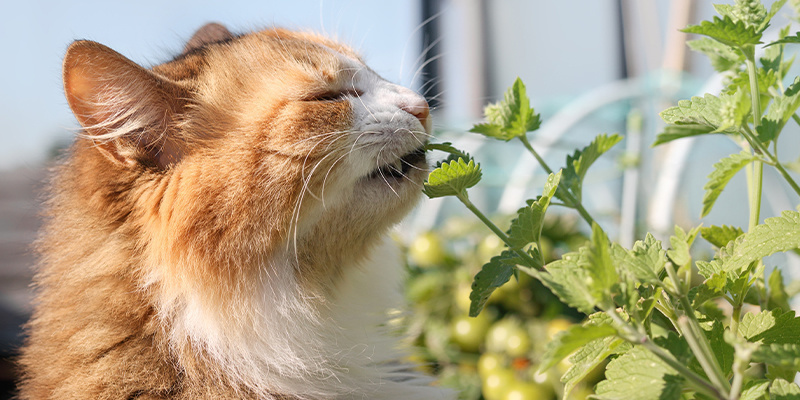
Nepeta cataria, more commonly known as catnip or catmint, is a leafy green herb belonging to the mint family. Complete with soft, heart-shaped leaves, tiny flowers, and a fresh, slightly citrus-mint scent, the aroma and appearance of catnip are sure to please.
But it's what's inside that really counts. The magic ingredient is an essential oil called nepetalactone, which is found in the stems and leaves of the plant. This compound is the reason your cat suddenly turns into a maniac after one good sniff. It's basically botanical cat crack—but totally safe!
Origin and nature of catnip
Catnip has a long and curious history that goes way beyond your living room floor. As a plant native to Europe, Asia, and parts of the Middle East, catnip has been growing wild for centuries, naturally thriving in sunny spots with well-drained soil. As part of the mint family, it shares its roots with other fragrant herbs such as basil and oregano. However, it's the only one that has the potential to send cats crazy!
People first noticed catnip's strange effect on felines thousands of years ago, with records of its use dating back to ancient civilisations. While it was initially grown for teas and natural remedies for people, it's more widely known for its impact on cats, and is still used for such purposes today.
How does catnip work?

Catnip might look like an innocent little herb, but it's pure magic to many cats. Something kicks in the moment they catch a whiff, but what's going on behind those wide eyes and frantic movements? Let's break down the science behind catnip's power.
The effects
When a cat encounters catnip, it's often like flicking a switch. One sniff of the active compound nepetalactone, and it binds to receptors in the cat's nose, triggering a response in the brain that looks a lot like euphoria. Within seconds, a once relaxed and calm cat might start rolling, flipping, running around, and purring loudly.
How long does catnip last?
The effects and sensations aren't permanent (thankfully!), and after around 10–15 minutes, your cat will lose interest and just wander off like nothing happened. Don't worry, it's completely normal. However, cats can build up a temporary tolerance to catnip if their exposure to it becomes too frequent.
This can be reset—just leave it a couple of days before giving your cat more, and the effects will return quickly.
Is catnip a drug? Does catnip make cats high?
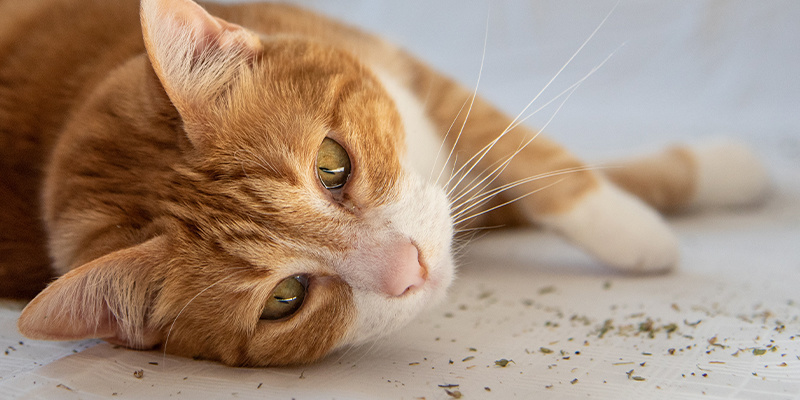
Judging by its effects, catnip might have all the hallmarks of a drug, but technically it's not. It doesn't interfere with the feline body's chemistry in the way that traditional drugs do, and it's not addictive or harmful. There's no denying that catnip does create a kind of “natural high” for cats, but this is only a temporary and harmless reaction to the natural nepetalactone present.
Why do cats like catnip?
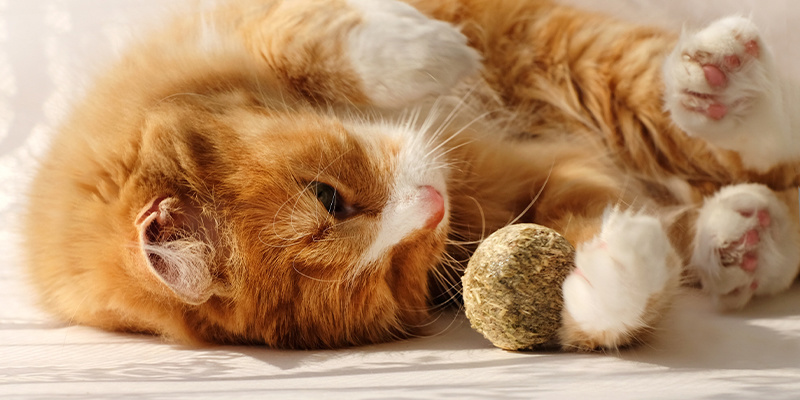
As you might have guessed by now, the effects produced by catnip are euphoric and enjoyable for cats. The nepetalactone triggers a powerful response in the cat's brain, specifically the parts linked to emotion and behaviour. It's believed their reaction is rooted in feline instincts, possibly mimicking the pheromones cats use to communicate. In other words, catnip might just be pressing all of the right buttons in their brains. No wonder they keep coming back for more!
Why doesn't my cat like catnip?
Unfortunately, not every cat feels the effects of catnip. So, if your cat gives catnip the cold shoulder, they're just built a little differently. Sensitivity to catnip is purely genetic, with around 50–70% of cats naturally affected by it. If your cat hasn't inherited this gene, they won't be that excited by the prospect of catnip and will react to it like any other typical plant in your home.
Age can also affect a cat's reaction to catnip. It's thought that kittens under 6 months old won't be impacted. Just give it a little time; when they're old enough, you can see if they feel the effects of catnip or not.
Can catnip be used for dogs?
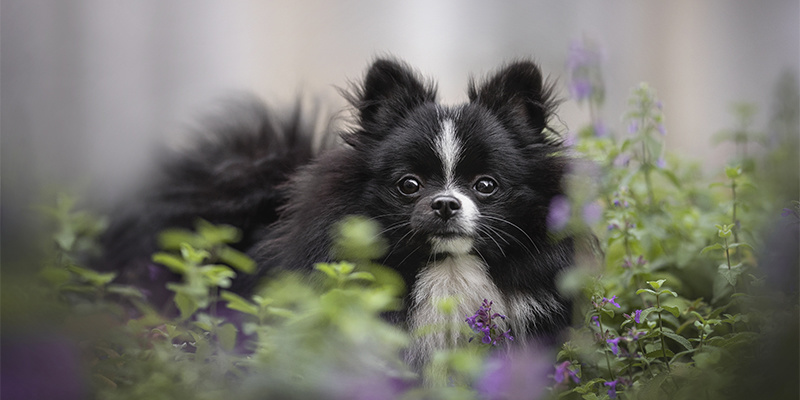
While you might think catnip is exclusive for cat use (hence the name), it can actually have a much milder (and very different) effect on dogs. It's perfectly safe to give your dog catnip, but don't expect them to be charging around your home.
When dogs are given catnip, it actually has a calming effect and is often utilised to ease anxiety, stress, and motion sickness. Some dog owners give their dog a little catnip before a car ride, a visit to the vet, or during fireworks.
What are the benefits of catnip?
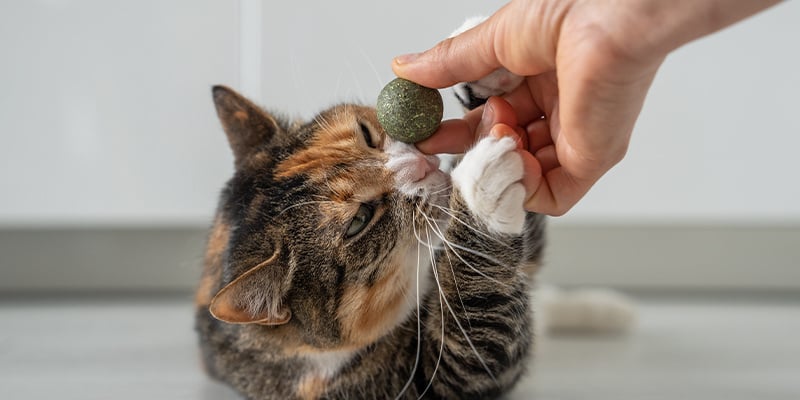
Catnip isn't just for fun; it has the potential to provide some benefits to cats as well. Beyond the playful chaos, this humble herb can help to support your cat's well-being in a few interesting ways.
It reduces anxiety
Catnip can work as a natural stress reliever for cats, helping them to feel less anxious. Whether they're heading to the vet or in a new environment, a little whiff can take the edge off and help your cat feel a little more at ease.
It can relieve pain

Thanks to its mild pain-relieving properties, catnip may help soothe minor aches and discomfort in cats. It certainly won't replace your vet, but it can offer extra comfort when they need it most.
It has anti-inflammatory properties
Catnip contains anti-inflammatory compounds, which can be helpful for older cats or those with joint issues.
It acts as a muscle relaxant
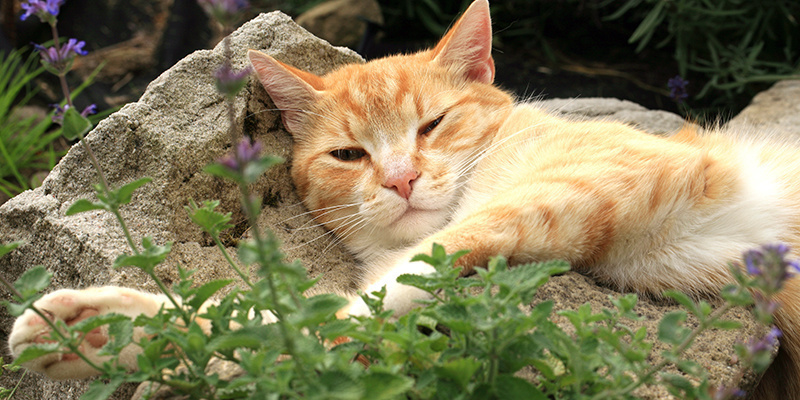
Catnip's calming powers also extend to the body. It can act as a gentle muscle relaxant, helping your cat to relax and unwind.
Different forms of catnip
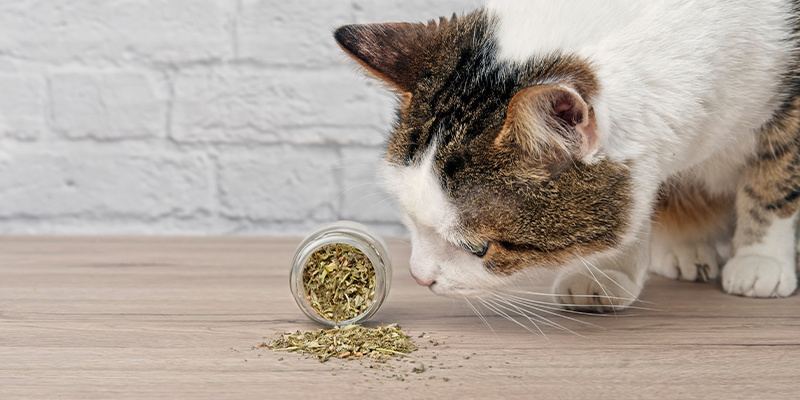
Catnip can be purchased in a wide variety of forms to suit all cats (and cat owners). Whether your cat prefers to sniff, chase, or nibble, there's an option that's bound to hit the sweet spot. From dried sprinkles to sprays, toys, and even tasty treats, here are some different ways to introduce your feline friend to catnip.
What kind of catnip is best?
As mentioned, the “best” catnip product depends on your cat's preference. Some will go wild for dried catnip, which is perfect for sprinkling on toys, bedding, and scratchers, or wherever your cat likes to hang out. Dried catnip is often the most potent, as dried blends use the flower tops where nepetalactone levels are the highest.
Fresh catnip is ideal for cats that love a nibble. It has a much stronger aroma and flavour, but some cats don't enjoy the texture of the fresh leaves.
Catnip sprays are a super convenient method of harnessing catnip. Just a quick spritz near your cat or on a toy, and they're good to go. While the effects are not as intense as fresh or dried catnip, sprays are great for quick bursts of fun or for training purposes.
If you're looking to introduce your cat to the wonders of catnip, many favour a dried form, but it may take a little experimenting to nail down your cat's preferred kind.
How to give cats catnip?
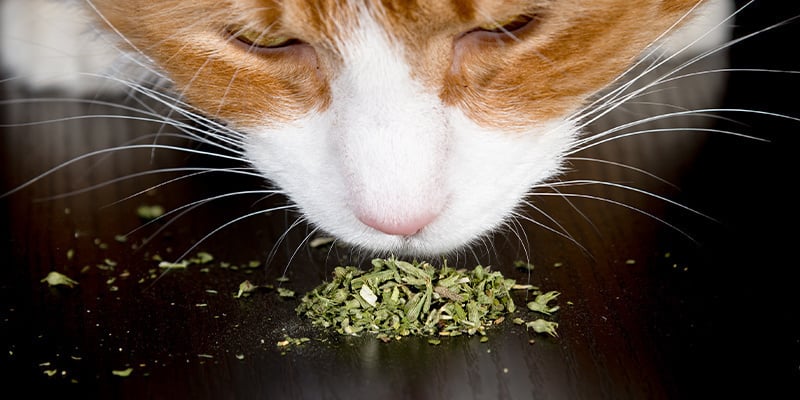
Now that you've picked out the perfect catnip product, how do you give it to them? Whether you're looking for maximum zoomies or a chilled-out session, here's an overview of the most popular catnip delivery methods.
Dried catnip
As the classic go-to, sprinkle a pinch onto your cat's favourite toy or play area and watch the craziness unfold. Dried catnip is versatile and effortless to store—just keep it in an airtight container when not in use for maximum potency.
Fresh catnip
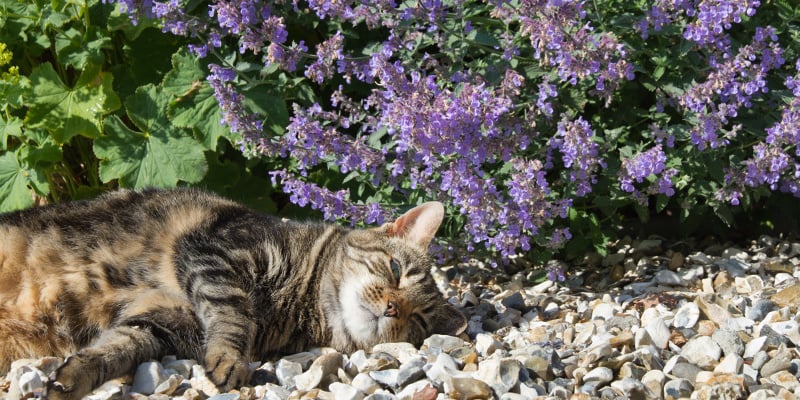
With a stronger scent and more flavour, fresh catnip is seen as the more “gourmet” version. Offer your cat a few leaves or let them explore the whole plant for an interactive experience. You can even grow your own catnip at home, giving your feline friend instant access when they need it most.
Catnip sprays
For a mess-free option, catnip sprays are super handy. Just spray a little on toys, bedding, or furniture to attract your cat's attention. It's an excellent way to refresh old toys or encourage scratching in areas other than the arms of your favourite lounge chair!
Catnip toys
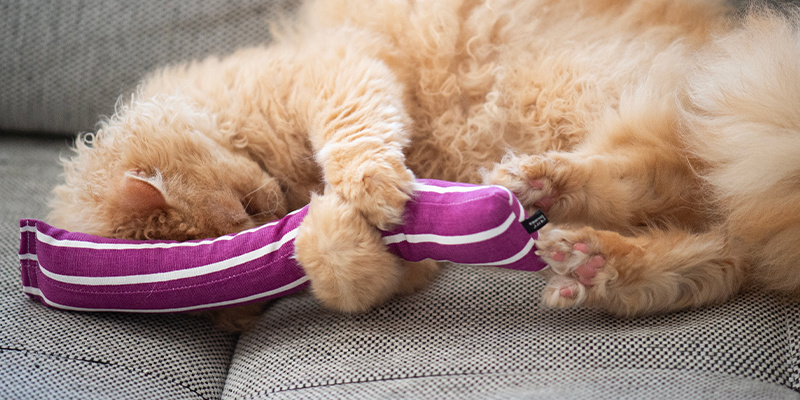
Catnip toys are pre-loaded with catnip and ready to go straight out of the box. From plush mice to balls, catnip-infused toys are perfect for tossing towards your cat and letting them discover the fun.
Catnip treats
Lastly, catnip treats are a great option for cats. Catnip-infused treats combine attractive tastes with subtle stimulation, offering a little reward with a buzz. Perfect for bonding with your pet or training them, catnip treats are a real game-changer.
Is catnip safe for cats?
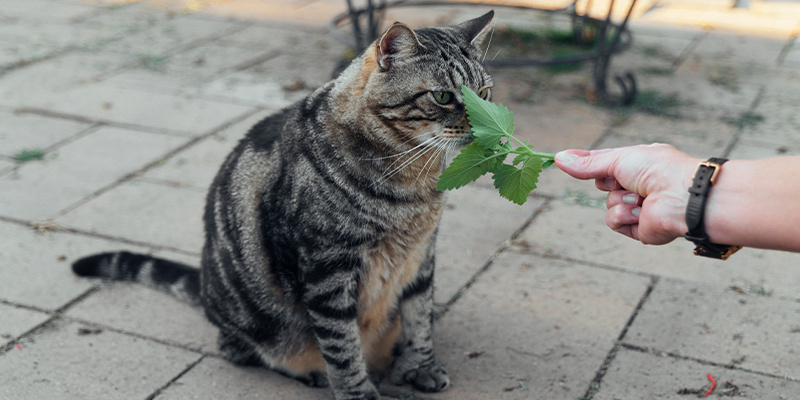
Catnip is generally safe for cats. Whether they're sniffing, nibbling, or rolling on it, most can enjoy this natural herbal treat without any issues whatsoever, as long as it's used in moderation.
As with most things in life, you can have too much of a good thing with catnip. Cats can experience some side effects, such as vomiting or diarrhoea, if they have too much at once. Others might become overly stimulated if exposed too often.
It's important to limit catnip use to a couple of times a week. Observe your cat's reaction each time, and be sure to store your catnip properly to keep it fresh. As with any new treat, start slow and build up from there. Of course, if in doubt, always consult your vet before giving your pets catnip.
Catnip: Nature's gift to cats

As you can see, catnip isn't just a quirky plant that can drive cats wild—although it can do that, too! It's a natural herb with a whole range of benefits. From potentially reducing anxiety and relieving mild discomfort, catnip offers a fantastic way to enrich your cat's (and dog's) life. Whether you go for dried, fresh, toys, or treats, there's the ideal form of catnip out there that your feline will love.
So, why not give it a try? Sprinkle some catnip magic into your cat's day and enjoy the show!

- France
- Germany
- International
- Italy
- Netherlands
- Spain
- United Kingdom
- United States
-
£8.60 £7.31
You might also like
-

 4 min
13 October 2023
Top 10 Healthy Herbal Teas
Besides boasting great flavours and mind-blowing aromas, herbal teas have long been utilised for their extensive range of potential wellness benefits. Read on to discover 10 fantastic, healthy herbal ...
4 min
13 October 2023
Top 10 Healthy Herbal Teas
Besides boasting great flavours and mind-blowing aromas, herbal teas have long been utilised for their extensive range of potential wellness benefits. Read on to discover 10 fantastic, healthy herbal ...
-
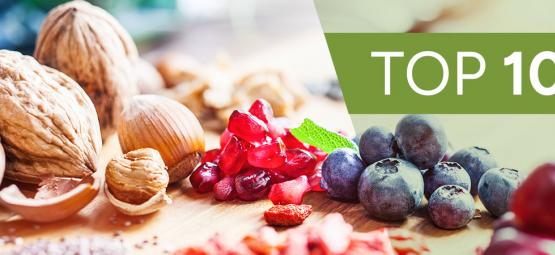
 6 min
4 July 2023
Top 10 Rare Superfoods To Boost Well-Being
Looking to take your healthy diet and lifestyle to the next level? Superfoods are packed with nutrients, vitamins, and minerals, and can help make an already healthy routine even better. Keep reading ...
6 min
4 July 2023
Top 10 Rare Superfoods To Boost Well-Being
Looking to take your healthy diet and lifestyle to the next level? Superfoods are packed with nutrients, vitamins, and minerals, and can help make an already healthy routine even better. Keep reading ...
-
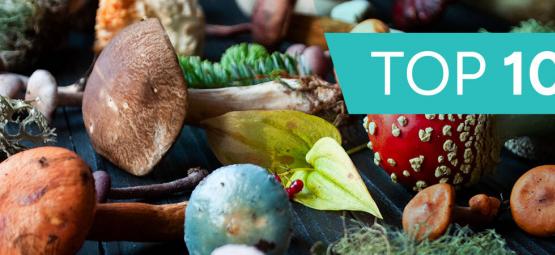
 4 min
3 July 2023
Discover Top 10 Mushrooms For Your Health
With so many varieties of mushrooms available, there's plenty that our funghi friends offer in terms of potential health and well-being benefits for users. What's more is that these mushroom extracts ...
4 min
3 July 2023
Discover Top 10 Mushrooms For Your Health
With so many varieties of mushrooms available, there's plenty that our funghi friends offer in terms of potential health and well-being benefits for users. What's more is that these mushroom extracts ...
-

 6 min
25 October 2019
Catnip: Everything you need to know
What is catnip, and why do cats go crazy for it? Explore everything about this beloved plant—from effects and benefits to tips on giving it safely to your feline friend. ...
6 min
25 October 2019
Catnip: Everything you need to know
What is catnip, and why do cats go crazy for it? Explore everything about this beloved plant—from effects and benefits to tips on giving it safely to your feline friend. ...
Categories
-
Seed Shop
- Feminized Cannabis Seeds
- Autoflowering Cannabis Seeds
- Regular Cannabis Seeds
- F1 Hybrids
- CBD Seeds
- Zamnesia Seeds
- Top 10 Autoflowering Seeds
- Top 10 Regular Seeds
- Top 10 USA Cannabis Strains
- Top 10 Zamnesia Seeds
- Top 10 Feminized Seeds
- Beginner Strains
- Below 1% THC
- Classic Cannabis Strains
- Cup Winners
- F1 Hybrids
- Fast-Flowering Strains
- High CBD Strains
- High THC Strains
- Mix Packs
- Zamnesia Exclusive Collabs
- Amnesia Seeds
- Blueberry Seeds
- Cheese Seeds
- Diesel Seeds
- Gorilla Seeds
- Haze Seeds
- Kush Seeds
- Purple Seeds
- Skunk Seeds
- White Widow Seeds
- Zamnesia Seeds
- ACE Seeds
- Advanced Seeds
- Amsterdam Genetics
- Anesia Seeds
- Auto Seeds
- Barney's Farm
- Big Buddha Seeds
- Bomb Seeds
- BSB Genetics
- BSF Seeds
- Buddha Seeds
- Bulldog Seeds
- Cali Connection
- Cannarado Genetics
- CannaBioGen
- CBD Crew
- CBD Seeds
- Compound Genetics
- The Dank Seeds
- Dark Horse Genetics
- Delicious Seeds
- Devil Harvest Original
- Dinafem
- DNA Genetics
- Doctor's Choice
- Dr. Underground
- Dutch Passion
- Elite Seeds
- Eva Seeds
- Exotic Seed
- Expert Seeds
- FastBuds
- Female Seeds
- Fenocan
- Flash Auto Seeds
- French Touch Seeds
- Garden of Green
- GeneSeeds
- Genehtik Seeds
- G13 Labs
- Grass-O-Matic
- Greenhouse Seeds
- Grow Your Own (DNA)
- Growers Choice
- Homegrown Fantaseeds
- House of the Great Gardener
- Humboldt Seed Company
- Humboldt Seed Organization
- Kalashnikov Seeds
- Kannabia
- The Kush Brothers
- Light Buds
- Little Chief Collabs
- Medical Seeds
- Ministry of Cannabis
- Mr. Nice
- Nirvana Seeds
- Original Sensible
- Paradise Seeds
- Perfect Tree
- Pheno Finder
- Philosopher Seeds
- Positronics Seeds
- Purple City Genetics
- Pyramid Seeds
- Rare Dankness
- Reggae Seeds
- Reserva Privada
- Resin Seeds
- Ripper Seeds
- Royal Queen Seeds
- Sagarmatha Seeds
- Samsara Seeds
- Seedstockers
- Sensation Seeds
- Sensi Seeds
- Serious Seeds
- Silent Seeds
- Soma Seeds
- Spliff Seeds
- Strain Hunters
- Sumo Seeds
- Super Sativa Seed Club
- Super Strains
- Sweet Seeds
- T.H. Seeds
- Top Tao Seeds
- Vision Seeds
- VIP Seeds
- White Label
- World Of Seeds
- Zativo Seeds
- Seed Banks
-
Headshop
-
Vaporshop
-
Healthshop
-
Smartshop
- Top 10 Smartshop
- Zamnesia Gift Cards
- After Party
- Aphrodisiacs
- Aromatherapy
- Blue Lotus
- CBD Vape Juice
- Capsule Machines
- Crystals, Gemstones & Minerals
- Dream Herbs
- Drug Tests
- Extracts
- Happy Caps
- Herbal Tea
- Herbs & Seeds
- Incense
- Kanna
- Kratom
- LSA Seeds
- Mescaline Cacti
- Microdosing
- Nootropics
- Relaxing
- Salvia divinorum
- Smart Seeds
- Stimulants
- Supplements
- Tinctures
- Vape Herbs
-
Shroomshop
-
Growshop
- Top 10 Growshop
- Top 10 Plant Seeds
- All Seeds
- Cacti
- Chilli & Pepper Seeds
- Companion Plants
- Edible Plant Seeds
- Exotic Seeds
- Flower Seeds
- Fruit Seeds
- Herb Seeds
- Interior Plant Seeds
- Microgreens
- Psychoactive Plant Seeds
- Sprouting
- Vegetable Seeds
- Wellness Plant Seeds
- After Harvest
- Climate Control
- Fertilizer
- Grow Tents
- Harvest, Dry & Cure
- LED Grow Lights
- Plant Seeds
- Propagation
-
Merchandise
-
Sale section
Account
Information
Our Offers
Our website won't work without these cookies activated. Therefore functional cookies can't be disabled.

























